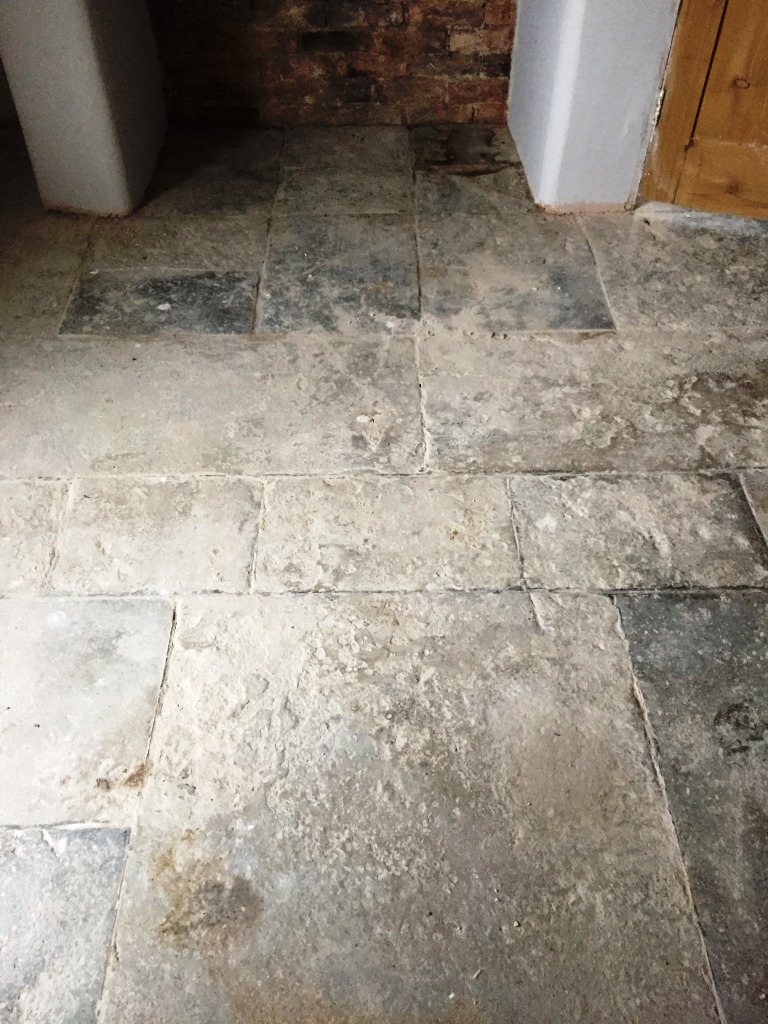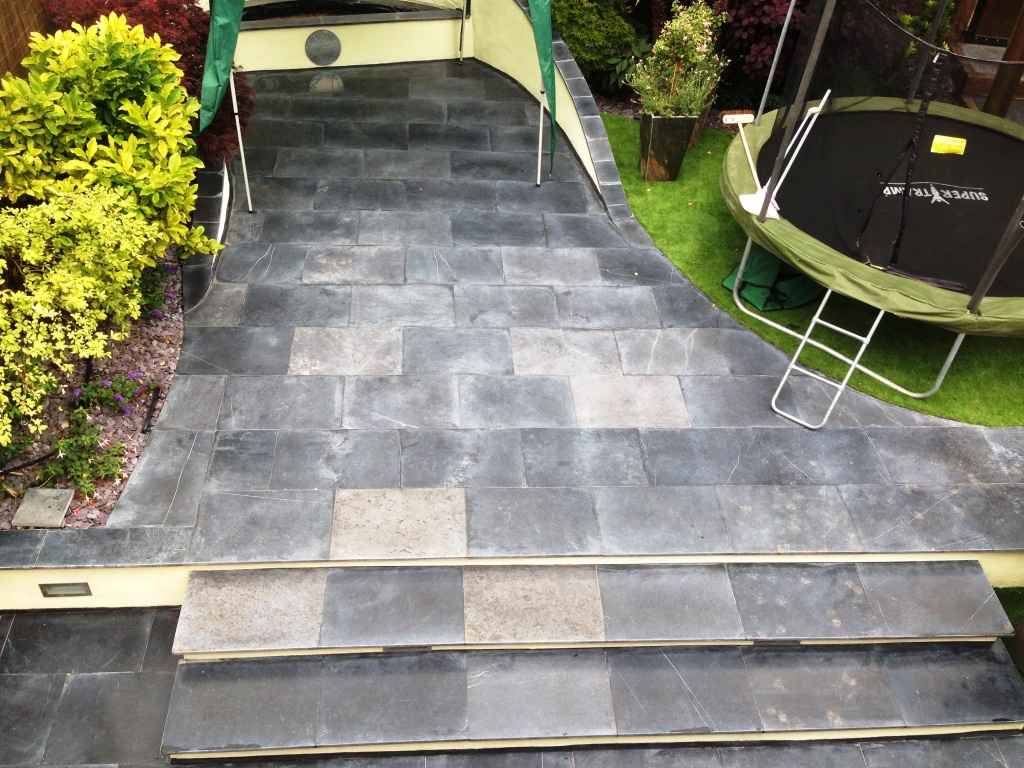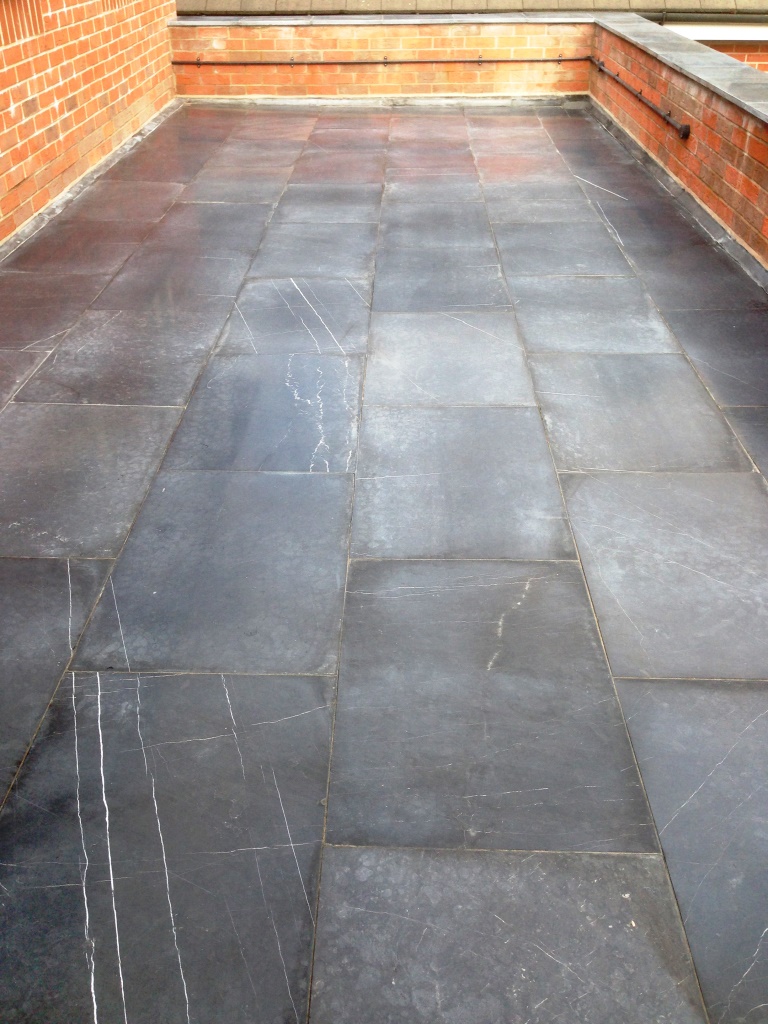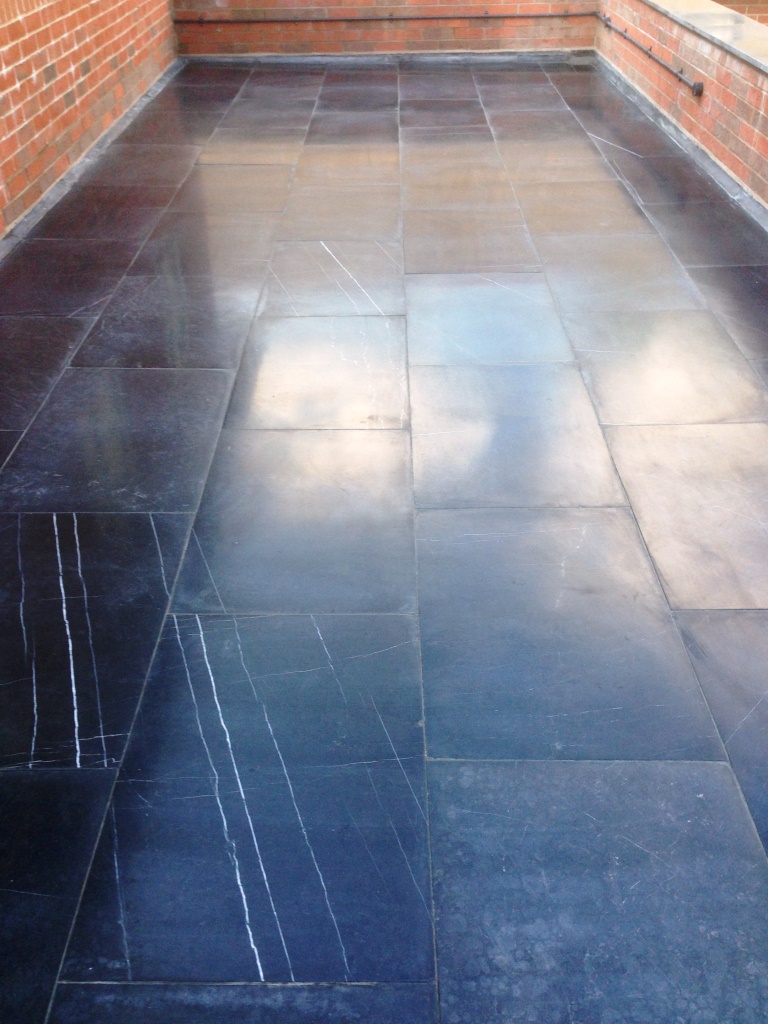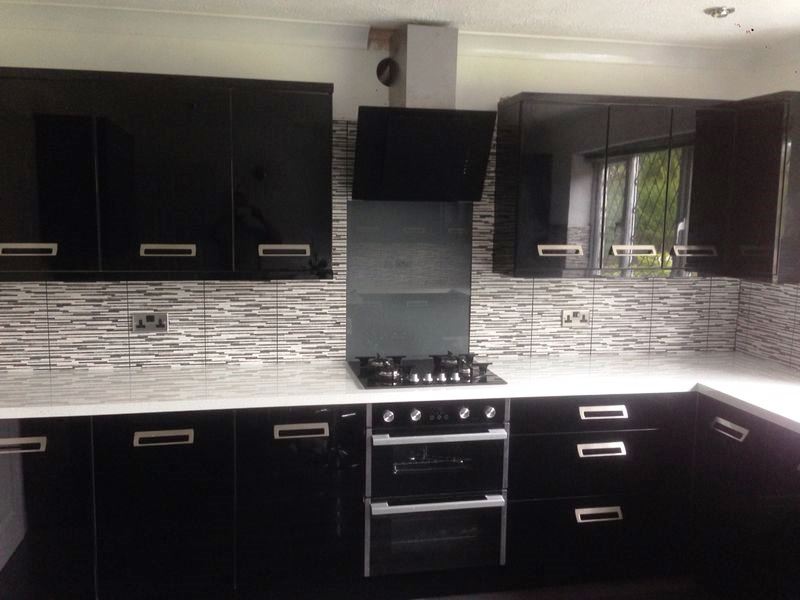Here's another interesting job I was privileged to work on in the town of
Bicester, Oxfordshire. Bicester has a long, rich history - dating back to the Saxon age - but it is also one of the fastest growing in Oxfordshire. In fact, I had an opportunity to experience part of this history when I was called to a house to work on a
old Flagstone floor which is believed to be 300-years old. The use of flagstones for both interior and exterior flooring is believed to have been popularised in Europe around the 13th century AD, and flagstone is still commonly used for these purposes today. As one of the few surviving of its kind, this Old-Flagstone-floor- has a preservation order on it - this means that it can't be covered by wood or other tiles.
Unfortunately, the rooms in this building were previously used as a sort of 'dumping ground' for builders working on the property, covering the floor with cement, plaster, sealant and glue, while also inflicting significant surface damage. As a result, it would take me three days to restore the Flagstone tiles back to their best possible condition.

Day one: Cleaning Old Flagstones
My first task was removing the medley of muck and dirt left over from the building works from the Flagstone tiles. I did this using a weak solution of
Tile Doctor Pro-Clean and clean water (the concentration is adjusted according to the level of soil build-up). Pro Clean mixed with water is my go-to cleaning solution for most natural stone floors as it works well to lift out ingrained dirt and stains. I spread the solution evenly onto the floor and worked it into the stone using a scrubbing brush attached to a floor machine. I then rinsed off the excess cleaner, before sucking up the residue with a wet-vac machine.
The second stage of the cleaning process was to strip the floor of any old sealers. This was achieved, working in sections, using
Tile Doctor Remove & Go, which can be used on unpolished natural stone floors, along with ceramic tiles, grout, and more. After leaving it to dwell for a short period, I scrubbed a layer of Remove & Go into the tiles using my floor machine and carbon brush. Following this, the floor was once again rinsed and any remaining moisture was removed with the wet-vac machine.
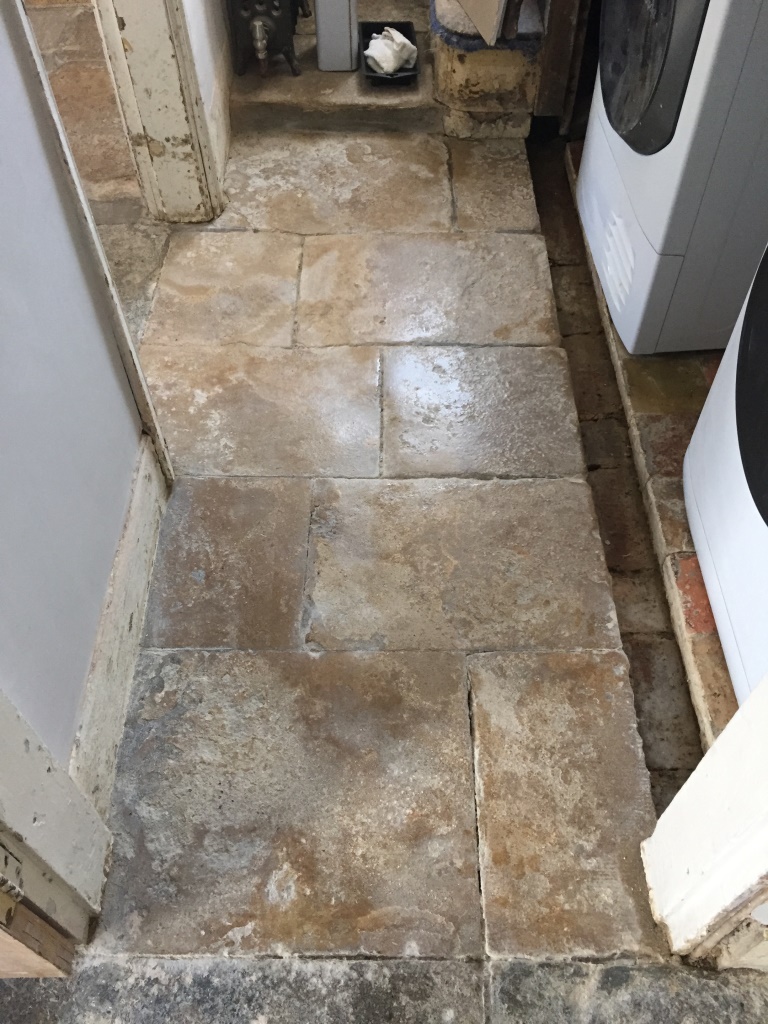
Day two: Burnishing Old Flagstones
After completing the cleaning, I moved on to the burnishing process. To give unpolished surfaces a nice polished look, the best method is to use a series of four diamond encrusted
burnishing pads. This is exactly what I did, first using a coarse pad, before gradually moving up through medium and fine, to eventually using a very fine pad to achieve the desired polished effect. This is done without causing any further damage to the surface of the Flagstone tiles.
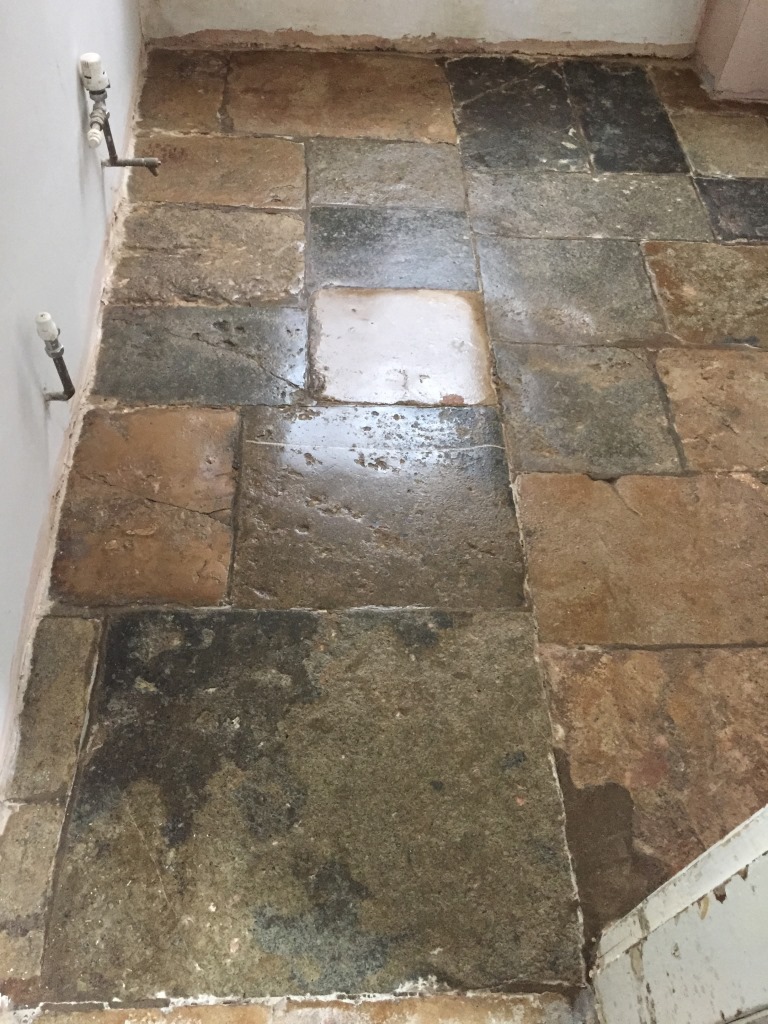
Day three: Sealing Old Flagstones
On the final day, I completed the job by sealing the floor. I applied two coats of Tile Doctor Colour Grow, an impregnating sealer which works to provide durable surface protection from within. At the same time, Colour Grow is specially formulated to intensify the natural colours in a majority of different stones including Flagstone, Limestone, Marble, Quarry and Slate, bringing character and life back to otherwise dull surfaces.
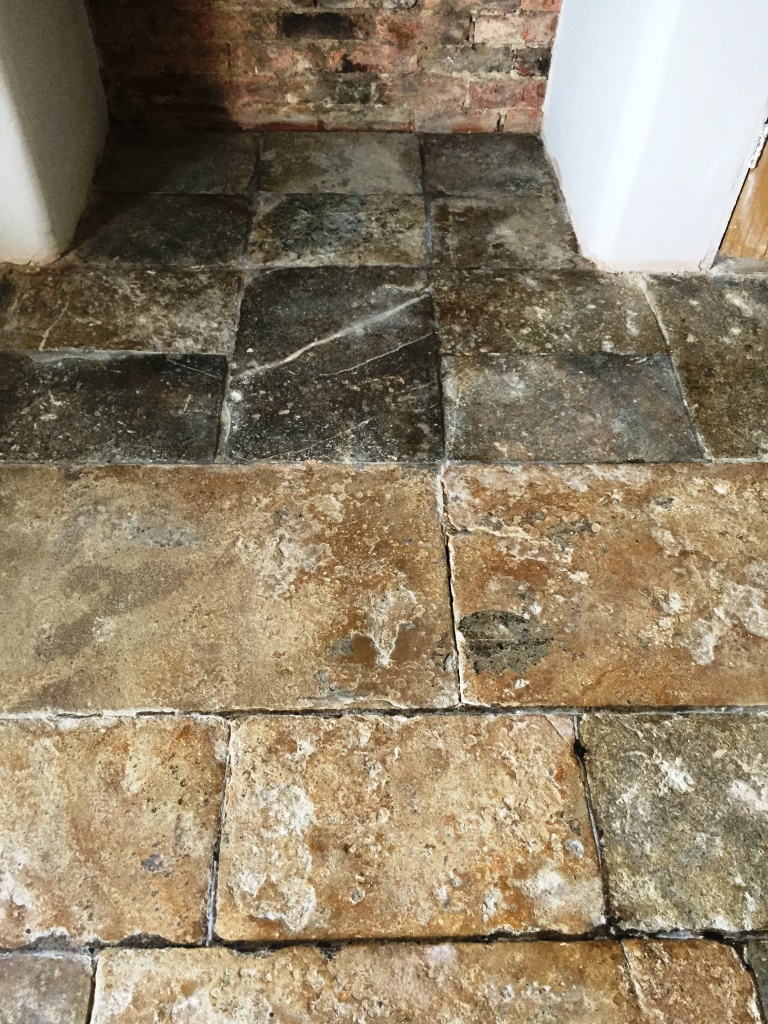
I'm pleased to say that the finished result exceeded my client's expectations, especially considering the extent of surface damage and neglect the floor had suffered during construction work. It is highly rewarding to work on unique, historic floors like this and to contribute to its preservation for many more years to come.
Source:
Commerical Floor Cleaning Services
